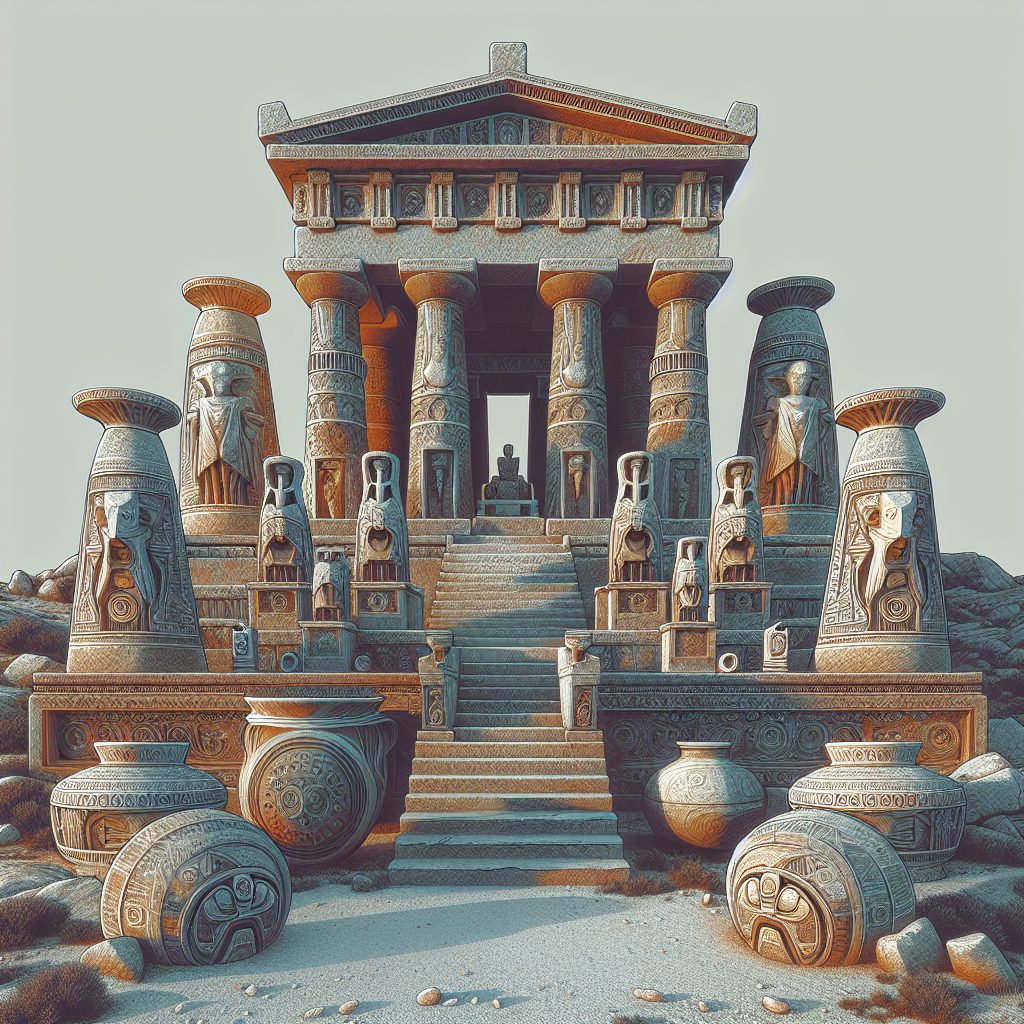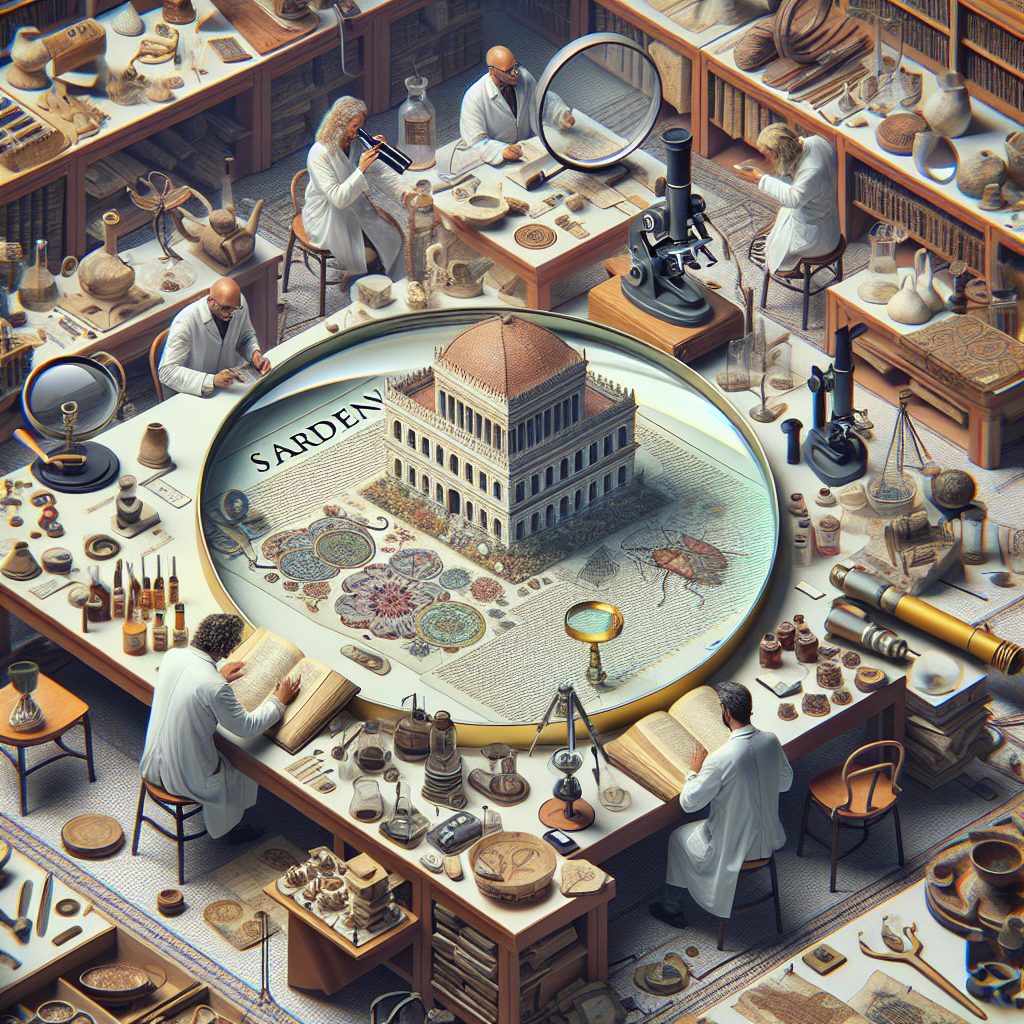The Megalithic culture of Sardegna refers to the ancient civilization that existed on the Italian island of Sardegna during the prehistoric period. This culture is known for its intriguing artifacts, which provide valuable insights into the lives and beliefs of the people who lived in this region thousands of years ago. From stone monuments to elaborate pottery, the Megalithic Sardegna artifacts have left a lasting impact on the field of archaeology, shedding light on the rich history and unique features of this ancient civilization.
One of the key aspects of the Megalithic culture of Sardegna is the construction of massive stone monuments, known as megaliths. These megalithic structures, such as dolmens and menhirs, were built by carefully arranging large stones and were often used as burial sites or ceremonial venues. The precision with which these structures were built showcases the advanced knowledge and engineering skills of the Megalithic Sardegna civilization.
Moving forward, let’s discuss the key takeaways from the Megalithic Sardegna artifacts. We will delve into the significance of these artifacts in understanding the cultural and religious practices of the ancient Sardegna inhabitants. Additionally, we will explore the unique features of the megalithic monuments and their role in shaping the landscape of Sardegna. By examining these key takeaways, we can gain a deeper appreciation for the intriguing world of the Megalithic culture of Sardegna.
Key Takeaways
1. The megalithic culture of Sardegna left behind an impressive collection of artifacts, including standing stones, megalithic structures, and tombs.
2. These artifacts provide valuable insights into the religious and funerary practices of the ancient Sardinians, revealing a complex and highly organized society.
3. The Nuragic civilization, which thrived in Sardegna from around 1800 to 500 BCE, constructed over 7,000 Nuraghe towers, which were key elements of their architectural landscape and likely served various purposes.
4. The megalithic culture of Sardegna also produced intricate statuettes called “bronzetti,” carved stone idols, and bronze weapons, showcasing the artistic skill and craftsmanship of the ancient Sardinians.
5. The mystery surrounding the purpose and function of certain megalithic structures, such as the “Tomba dei Giants” or Giant’s Graves, continues to intrigue archaeologists, leaving room for ongoing speculation and research.
What are the Fascinating Megalithic Culture Sardegna Artifacts? Unveiling Ancient Treasures
1. Introduction to Megalithic Culture in Sardegna
The Megalithic culture in Sardegna refers to the ancient civilization that flourished on the island of Sardegna, Italy, during the prehistoric period. This culture is characterized by the construction of impressive megalithic structures and the creation of unique artifacts. These artifacts shed light on the lives, beliefs, and traditions of the ancient Sardegna people.
2. Megalithic Structures: Nuraghi and Menhir
The most prominent features of the Megalithic culture in Sardegna are the nuraghi and menhir structures. Nuraghi are ancient stone towers, typically built with large, rough-hewn stones, and were used for various purposes such as military defense, religious rituals, and dwellings. Menhirs, on the other hand, are standing stones that were often arranged in rows or circles, possibly serving as markers or monuments.
3. Megalithic Artifacts: Pottery and Tools
Archaeological excavations have unearthed a myriad of Megalithic artifacts in Sardegna, providing valuable insights into the daily lives and craftsmanship of its ancient inhabitants. Pottery played a significant role in the culture, with various types of vessels and containers produced using local clays. These ceramics are often adorned with intricate designs and motifs, showcasing the artistic abilities of the Sardegna people. Additionally, stone tools made from obsidian or flint were essential for hunting, farming, and constructing megalithic structures.
4. Symbolic and Ritual Objects
The Megalithic culture in Sardegna was rich in symbolic and ritual objects, indicating their spiritual beliefs and practices. Many artifacts are believed to have been used in religious ceremonies or as offerings. These include small statues, amulets, and figurines carved from stone, bone, or metal. Elaborate jewelry, such as necklaces and bracelets made from shells, amber, and precious metals, were also popular among the ancient Sardegna people.
5. Megalithic Art: Rock Carvings and Engravings
The art of the Megalithic culture in Sardegna is also reflected in the preservation of rock carvings and engravings. These artistic expressions can be found in caves, natural rock formations, or megalithic structures, depicting human figures, animals, and various symbols. These enigmatic carvings offer a glimpse into the cultural and spiritual beliefs of the ancient Sardegna people, although their precise meanings remain open to interpretation.
6. Preservation and Significance
The preservation of Megalithic culture Sardegna artifacts is of utmost importance to archaeologists, historians, and cultural enthusiasts. These artifacts provide valuable evidence of prehistoric societies, their technological advancements, religious beliefs, and social structures. By studying and safeguarding these artifacts, we can better understand the legacy and contributions of the Megalithic culture in Sardegna to the broader European prehistory.
Guide to Exploring Megalithic Culture Sardegna Artifacts
- How to visit archaeological sites:
- Research and identify the key Megalithic sites in Sardegna.
- Consult local authorities or tour guides for access and visitation information.
- Plan your visit during suitable weather conditions for a more enjoyable experience.
- Understanding the context:
- Read up on the historical background and significance of Megalithic culture in Sardegna.
- Learn about the archaeological methods used to excavate and analyze the artifacts.
- Explore academic literature or documentaries to gain deeper insights.
- Interpreting the artifacts:
- Observe the visual aspects of the artifacts, including their material, colors, and designs.
- Familiarize yourself with the typology and classification systems of Megalithic artifacts.
- Consider the possible functions, cultural meanings, and societal roles of the artifacts.
- Engaging with local experts:
- Collaborate with archaeologists, historians, or curators to further enhance your understanding.
- Participate in guided tours, workshops, or lectures organized by cultural institutions.
- Ask questions, seek clarifications, and share your own insights or observations.
- Documenting the experience:
- Take photographs or make sketches of the artifacts and their surroundings (if permitted).
- Maintain a journal or digital notes to record your thoughts, reflections, and discoveries.
- Share your experiences and findings with fellow enthusiasts or online communities.
Frequently Asked Questions
1. What is the significance of Megalithic culture in Sardegna?
Megalithic culture in Sardegna refers to the ancient civilization that existed in the island of Sardegna during the prehistoric period. It is significant as it showcases the sophisticated skills of the ancient inhabitants in constructing megalithic structures like nuraghe towers and tombs.
2. What are the artifacts associated with the Megalithic culture in Sardegna?
The artifacts associated with the Megalithic culture in Sardegna include pottery, stone tools, idols, and bronze objects. These artifacts provide valuable insights into the daily lives, religious beliefs, and technological advancements of the ancient Sardegnan people.
3. How were the megalithic structures in Sardegna built?
The megalithic structures in Sardegna were built using huge stones, often without any mortar or cement. The stones were carefully arranged to form the walls, roofs, and chambers of the structures. The techniques used by the ancient Sardegnans are still a subject of study and debate among archaeologists.
4. What is the purpose of nuraghe towers?
Nuraghe towers were the main architectural feature of the Megalithic culture in Sardegna. Their purpose is still not fully understood, but they are believed to have served as defensive strongholds, religious centers, or symbols of social status. Some nuraghe towers also contain complex internal structures, highlighting their multifunctional nature.
5. How old are the Megalithic artifacts found in Sardegna?
The Megalithic artifacts found in Sardegna date back to the Bronze Age, which lasted from around 2200 BCE to 900 BCE. However, some megalithic structures, like the nuraghe towers, may have been built as early as the 18th century BCE.
6. Are there any Megalithic sites open to the public in Sardegna?
Yes, there are several Megalithic sites in Sardegna that are open to the public. This includes the nuraghe complex of Su Nuraxi in Barumini, which is a UNESCO World Heritage Site. Other sites include the nuraghe of Palmavera, the giants’ tombs of Coddu Vecchiu, and the sacred well of Santa Cristina.
7. What can we learn from studying Megalithic culture in Sardegna?
Studying Megalithic culture in Sardegna enables us to gain a deeper understanding of the ancient civilization’s social structure, religious practices, agricultural techniques, and architectural prowess. It also sheds light on their connections with other contemporary Mediterranean cultures.
8. Are there any ongoing archaeological research projects focused on Megalithic culture in Sardegna?
Yes, there are ongoing archaeological research projects dedicated to studying the Megalithic culture in Sardegna. These projects aim to uncover new sites, analyze previously excavated artifacts using advanced scientific techniques, and unravel the mysteries surrounding the ancient civilization.
9. How can I support the preservation of Megalithic artifacts in Sardegna?
You can support the preservation of Megalithic artifacts in Sardegna by visiting the archaeological sites responsibly, following all the rules and regulations set by the authorities. By promoting awareness about the cultural significance of these artifacts and encouraging sustainable tourism, you contribute to their long-term preservation.
10. Can I find Megalithic artifacts in museums?
Yes, numerous museums in Sardegna and around the world exhibit Megalithic artifacts from the ancient culture. These artifacts provide an opportunity to appreciate the craftsmanship and cultural heritage of the Megalithic civilization. Museums like the National Archaeological Museum of Cagliari and the Archaeological Museum of Nuoro have extensive collections for exploration.
Final Thoughts
The Megalithic culture in Sardegna is a captivating topic that unveils the mysteries of an ancient civilization that thrived thousands of years ago. Through the artifacts and megalithic structures discovered, we can piece together the story of their daily lives, social structures, and technological advancements. Exploring these remnants of the past not only unveils the rich history of Sardegna but also highlights the cultural interconnectedness of ancient civilizations.
As we continue to unravel the secrets of the Megalithic culture in Sardegna, it becomes apparent that these artifacts are invaluable in preserving the cultural heritage of the island. By appreciating and supporting the preservation efforts, we ensure that future generations can also appreciate the legacy of the ancient Sardegnan people, their impressive architectural feats, and their vibrant cultural traditions.






